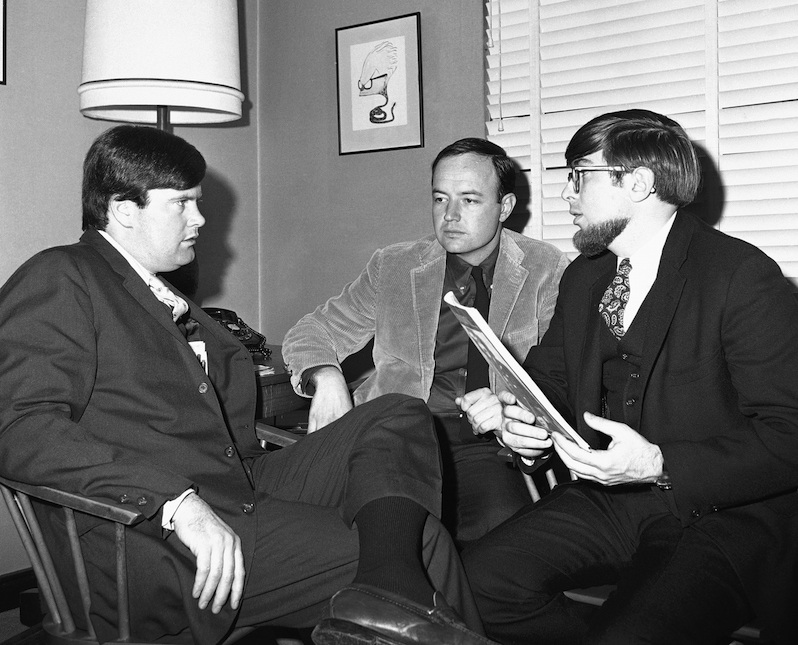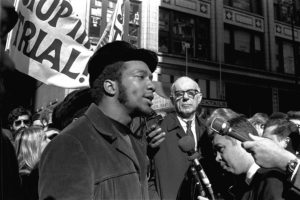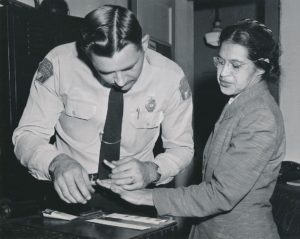Warren Hinckle: Remembering the Godfather of Gonzo
The legendary Ramparts editor who later ingeniously paired writer Hunter Thompson and artist Ralph Steadman died this week, leaving a slew of colorful memories behind him. From left, Ramparts' Warren Hinckle, Sol Stern (who was the assistant managing editor) and Robert Scheer. (RHH / AP)
From left, Ramparts' Warren Hinckle, Sol Stern (who was the assistant managing editor) and Robert Scheer. (RHH / AP)
From left, Ramparts’ Warren Hinckle, Sol Stern (who was the assistant managing editor) and Robert Scheer. (RHH / AP)
SAN FRANCISCO — Warren Hinckle, the swashbuckling editor of Ramparts magazine, died Thursday. His daughter Pia cited complications from pneumonia as the cause of death. He was 77.
Warren began working for Ramparts when it was a Catholic literary quarterly in Menlo Park, Calif. He converted it to a stylish monthly, moved the office to San Francisco and recruited editor Robert Scheer (now editor in chief of Truthdig) and creative director Dugald Stermer. Under Warren’s leadership, the magazine ran blockbuster stories about Vietnam, the CIA and the Black Panthers. It also landed prestigious journalism awards, drew the scrutiny of national intelligence agencies and exhausted the private fortunes of two publishers.
After Ramparts filed for bankruptcy in 1969, Warren co-founded Scanlan’s Monthly, which published only eight issues. For one of them, he paired Hunter S. Thompson with Welsh illustrator Ralph Steadman. Their story, “The Kentucky Derby Is Decadent and Depraved,” is widely considered the first example of gonzo journalism.
Thompson and Steadman later worked for Rolling Stone magazine, which Warren unintentionally helped to create. When he wrote a critical story about San Francisco hippies for Ramparts in 1967, contributing editor Ralph Gleason resigned in a fury. Gleason and another Ramparts staffer, Jann Wenner, decided to start their own magazine. The first issue of Rolling Stone appeared later that year.
Warren was born in San Francisco, attended parochial schools and edited the campus newspaper at the University of San Francisco. While drinking at the House of Shields, a San Francisco Examiner watering hole, he learned that a San Francisco Chronicle columnist had been arrested at a public bathroom on Union Square. Warren wrote an expose for the USF Foghorn and created minor embarrassment at the Chronicle, which then hired him as a police reporter in Oakland.
Warren was attracted to the Chronicle’s spirit of showmanship under Editor Scott Newhall. In his memoir, Warren encapsulated that spirit by quoting entertainer George M. Cohan, who once advised Spencer Tracy, “Whatever you do, kid, always serve it with a little dressing.” Warren’s style reflected that advice. His white linen, velvet or three-piece suits and patent-leather dancing shoes earned him a reputation as a dandy. His most distinctive accessory was a black eye patch, which he wore after a childhood auto accident.
The author of many books, including his 1974 memoir, Warren later edited Francis Ford Coppola’s City magazine and wrote for The San Francisco Examiner. But his signal achievement was presiding over Ramparts, the “radical slick” known for its audacity and irreverence. According to The New York Times, the magazine restored the lapsed institution of muckraking, put showmanship back into journalism and gave radicalism a commercial megaphone.
Warren’s effect on his Ramparts colleagues, especially younger ones, was dazzling. “He raced through each 18-hour day with dizzying speed,” Adam Hochschild recalled.
All action swirled around him: a pet monkey named Henry Luce would sit on his shoulder while he paced his office, drink in hand, shouting instructions into a speakerphone across the room to someone in New York about a vast promotional mailing: on his couch would be sitting, slightly dazed, a French television crew, or Malcom X’s widow (who arrived one day surrounded by a dozen bodyguards with loaded shotguns), or the private detective to whom Warren had given the title Criminology Editor. Then would follow an afternoon-long lunch where Warren would consume a dozen Scotches without showing the slightest effect and sketch dummies of the next issue’s pages on the restaurant’s placemats. Finally he’d be off on the night plane to see new backers in the East.
Warren’s style didn’t make for smooth sailing, but most of the magazine’s major achievements took place during his tenure.
At Ramparts’ peak in 1967, Warren clashed with founding Publisher Edward Keating. Editorial board member Jessica Mitford described Warren and Scheer as “brilliant young bandits doing an extraordinary job,” while acknowledging that their “ruthless handling of people” was creating problems. “It seems obvious to me that if it had to come to a choice between Hink/Scheer and Keating—well, I mean there simply is no choice; Hink/Scheer are the mag, the creators of everything that’s so splendid about it. … But one does wish they could be a trifle less Animal Farm-ish about it.” In the end, the board dismissed Keating and retained Warren.
As the magazine’s financial picture worsened in 1968, Warren turned his gaze to the Democratic National Convention. He transported 10 staff members to Chicago to cover it and installed them in the luxurious Ambassador Hotel. He also decided to produce the Ramparts Wall Poster, which reported on the convention and related street activities. The posters were single full-folio sheets whose title and format recalled the publications of Mao Zedong’s Red Guard during the Cultural Revolution. (The motto for the Ramparts Wall Poster was “Up Against the Wall.”) Hunter Thompson lifted the idea during his 1970 run for sheriff in Pitkin County, Colo. He promised to send Warren a copy of the Aspen Wallposter. “And if the Wallposter name rings a bell,” he wrote Warren, “well, I’ll never deny it.”
In January 1969, the magazine’s board of directors put Ramparts into bankruptcy. The magazine reorganized and continued until 1975, but Warren went on to co-found Scanlan’s with New York Times legal reporter Sidney Zion. After the magazine ran “The Kentucky Derby Is Decadent and Depraved,” Thompson told Warren that he and Steadman could travel the country together producing pieces from high-profile American events. Although Scanlan’s folded soon after that, Thompson and Steadman executed that idea in their 1971 book, “Fear and Loathing in Las Vegas.”
Scanlan’s also ran a memo, purportedly from Vice President Spiro Agnew, about a top-secret plan to cancel the 1972 election. In his memoir, former White House counsel John Dean recalled his first order from President Nixon. “I’m still trying to find the water fountains in this place,” Dean complained to one Nixon adviser. “The President wants me to turn the IRS loose on a shit-ass magazine called Scanlan’s Monthly.”I came to know Warren while I was researching “A Bomb in Every Issue” (the title echoed Time magazine’s description of Ramparts). He was exceedingly difficult to contact. Leaving a message on his answering machine was like stuffing a note in a bottle, flinging it off the Golden Gate Bridge and waiting patiently for a reply. Some Bay Area journalists laughed when I mentioned my difficulty. They suggested I stake out Warren’s favorite bars. In the end, that wasn’t necessary. I found him in a bar at the Staples Center in Los Angeles, the site of a large book convention. When I introduced myself and mentioned a mutual friend, he said he wasn’t especially interested in rehashing the Ramparts story for posterity, but he was happy to help a friend of a friend.
For the next hour, Warren was helpful, engaging, and good company in every way. After going over the Ramparts stories and legends, I asked why he thought the magazine had been so successful during his tenure. “Probably because the rest of the press was so shitty,” he replied. He offered the judgment gently. The corporate media’s shortcomings disturbed him no more than the Catholic Church’s had 50 years earlier. But his answer was remarkable for another reason. In a rare departure from interviewing custom, he had declined an opportunity to burnish his own legend. Could it be that he really didn’t give a damn? As I considered that possibility, he excused himself, picked up his cellphone and placed a call to celebrity editor Judith Regan.
When my book appeared, Warren offered only two corrections. The first concerned a fundraising pitch he gave to an heiress in Manhattan. Equipped with flip charts to emphasize Ramparts’ imminent success, he began his presentation in her Park Avenue apartment. As he spoke, her rare toy dogs scampered around the apartment. The purebreds were so tiny, Scheer said later, they looked like “moving slippers.” Deep into his pitch, Warren accidentally stepped on one. Scheer claims that Warren killed it, slipped the dog into his pocket and said he would get her another one. A famous dog lover, Warren admitted that he stepped on the dog but denied that he killed it.
The other correction concerned a drive to the airport with Reese Erlich, at that time a Ramparts employee. Warren instructed Erlich to pull over to a bar. When the bartender saw Warren enter, Erlich told me, he immediately prepared 15 screwdrivers. Warren polished them off and missed the flight. But Warren told me he would never order 15 screwdrivers at a time, noting that the last ones would be too watery. When I mentioned that point to Erlich, he conceded that Warren may have drunk the screwdrivers in three batches of five.
When it became clear that Warren’s death was imminent, stories about him began flowing freely in print, on social media and in conversation, especially here in San Francisco. He was a Big Personality, and he will be remembered as such. But Warren also made American journalistic history at least twice: by directing Ramparts magazine and by pairing Thompson and Steadman at Scanlan’s. His remarkable achievements, some obscured by the passage of time, should be part of those memories as well.
Your support matters…Independent journalism is under threat and overshadowed by heavily funded mainstream media.
You can help level the playing field. Become a member.
Your tax-deductible contribution keeps us digging beneath the headlines to give you thought-provoking, investigative reporting and analysis that unearths what's really happening- without compromise.
Give today to support our courageous, independent journalists.






You need to be a supporter to comment.
There are currently no responses to this article.
Be the first to respond.